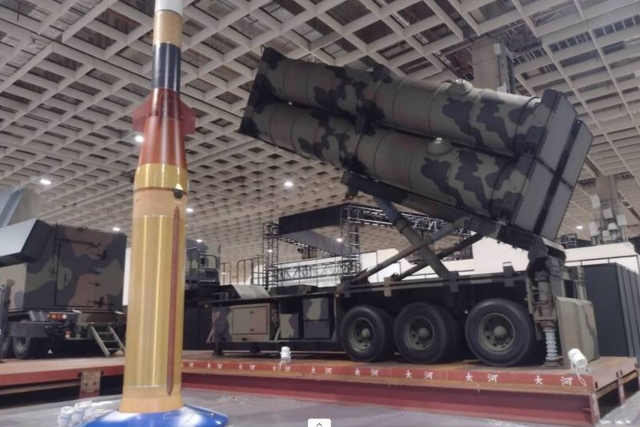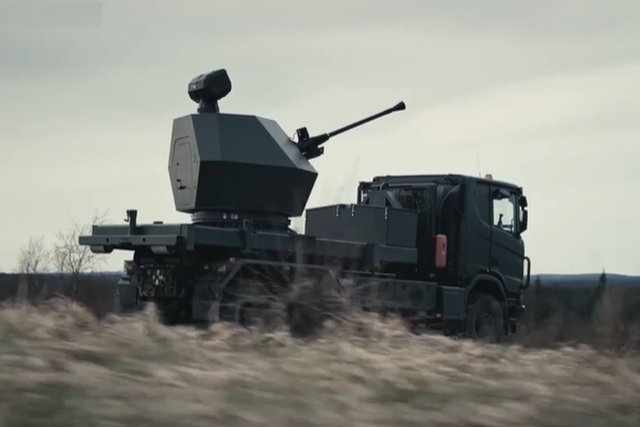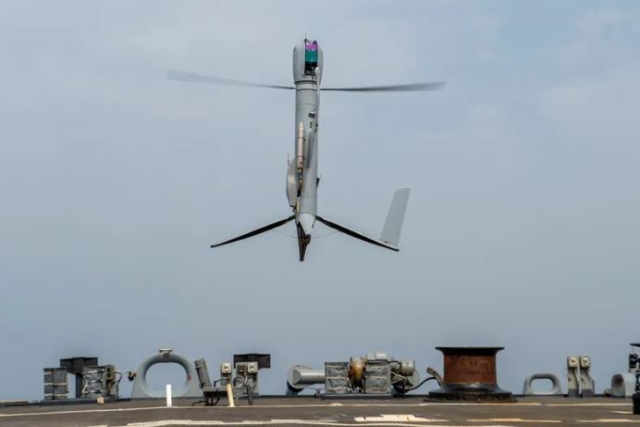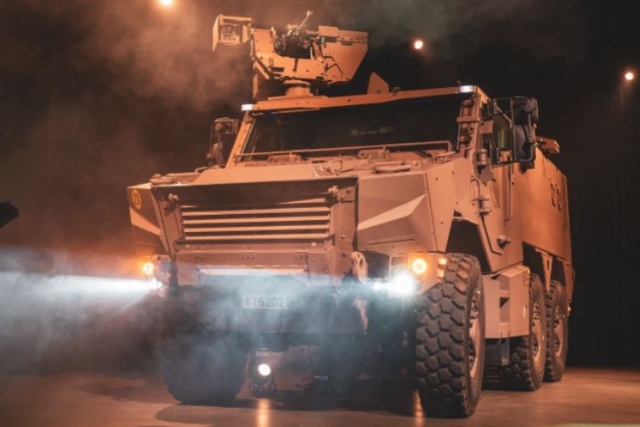Plant DNA To Help Sniff Out Counterfeit Defense Electronics

Dr. Jim Hayward, CEO, Applied DNA Sciences
Defenseworld.net spoke to Dr. Jim Hayward, CEO of ADNAS about the new and unique method that will help in identifying counterfeit components in defense electronics. The technology assumes significance in the light of a recent U.S. rule which requires defense contractors to bear the onus of identifying fake components.
DW : Can you give us an overview of how SigNature DNA works and its significance for defense applications?
Dr. Jim Hayward: SigNature DNA authentication involves the marking of a part with a microscopic amount of plant DNA. A microchip, for example, can be marked while on the production lines of a manufacturer. This mark embodies a code which identifies the microchip with the manufacturer’s own unique mark. The mark can then be scanned and read at any point in its journey to distributors, assemblers, and thence to the military supply. If suspect, it can be submitted for forensic identification, just as law enforcement agencies identify suspects using DNA. DNA is the strongest encryption system known—think of the unique encoding carried by each of the six billion individuals on the planet. In addition, plant DNA is extremely robust, surviving in extremes of radiation, heat, vibration, and other ambient conditions.Taken together, the properties of plant DNA make it uniquely qualified as an authentication marker for military purposes, where reliability and durability can be a life or death question.
DW : So far, SigNature DNAs has been used for non-defense related purposes, like imprinting art work. Where did the idea to move into the defense security stem from?
Dr. Jim Hayward: In fact, SigNature DNA is already being used in a live pilot by the Defense Logistics Agency (DLA) of the DoD to authenticate microchips headed for the military supply chain, at major original chip manufacturers and primes. This eighteen month pilot has been enormously successful and is now expanding to off shore manufacturing facilities, as well as to the oft-counterfeited territory of post-production chips. The majority of Signature DNA usage right now is already in high-security areas. In the UK, it is used to protect 30% of all the cash being transported by banks, and in UK and Sweden by police for other operations I can’t disclose. It is also used to protect high-value sites, such as jewelry stores and bank tellers. As you see, our security portfolio is strong; we thrive in situations where protection against counterfeits is mission-critical. It is a natural fit for military purposes. Incidentally, we do not now authenticate art work, although we have recently been approached by organizations with an important presence in the art world. You would recognize them.
DW : What impact will the Levin-McCain Amendment have on Applied DNA Sciences Inc. work in the defense arena?
Dr. Jim Hayward: The short answer is: this is a game-changer, for our work and for all defense contractors. Our profile is particularly high in the electronics and nanotechnology areas, where we are already undertaking a pilot with the military, as I described earlier. We are positioned to play a role in protecting our country from a serious threat and simultaneously serve the business interests of defense suppliers. It’s also important to take note of the other factors which will soon drive contractors to bring authenticating system on line more quickly, perhaps, than anyone thought even a year ago. We are working with all the major players in the push to solve the crisis Now to the details. Amendment 818 of the National Defense Authorization Act for 2012 requires defense contractors to field systems that “detect and avoid” counterfeit parts on pain of legal liability, of cost reimbursement, and even in some cases disbarment. And the amendment begins to spell out a time line and milestones. All this was a direct result of Senate Armed Services Committee (SASC) hearings back in November that exposed thousands of counterfeits in the supply chain and specific weapons systems. We had testified earlier to the office of the Committee, and our partner, SMT Corporation, acted as technical consultant during the hearings. At the same time, the SAE’s Counterfeit Electronic Parts Committee (SAE G-19 Committee), charged with setting industry’s own standards, is refining and sharpening those standards even now. So that is going to strongly shape the business decisions of defense suppliers. Finally, the DLA itself has indicated twice recently that DNA marking should be explored as one solution to the crisis; this includes a public statement on their web site last week that named Applied DNA Sciences, and some of our partners in their pilot: Raytheon, and others.
DW : Could you give us an estimate of how many weapons have already been imprinted with anti-counterfeiting technology known as SigNature DNA?
Dr. Jim Hayward: We do not mark weapons systems directly; as I say, we have concentrated on electronics and especially microchips which are bound for the military supply chain. In the pilot we have marked upwards of 20,000 chips so far, in live process tests in the factories and assembly venues, with an authentication success rate of 100%--no failures. This may sound outrageously high. But it attests to the extreme reliability and power of DNA as an information carrier, and to some extent on the simplicity of our solution. Microchips like these are of course ultimately incorporated into weapons systems, among other things. I will point out that the SASC found counterfeit microchips, like the ones we are marking, in a frighteningly high number of weapons systems: mission computers for the Missile Defense Agency’s THAAD (Terminal High Altitude Area Defense) missile, and operational amplifiers used in Army and Air Force’s Joint Surveillance and Target Attack Radar System (JSTARS) to name a couple.
DW : Counterfeiting of illegitimate goods is expected to rise up to $1.7 trillion by 2015. What kind of counterfeit electronics are sold and where do they originate from?
Dr. Jim Hayward: First, let’s be clear that the figure you cite is from the International Chamber of Commerce, if I’m not mistaken, and it comprehends the value of both goods and intellectual property to the global economy. Taking electronics in particular, this is an estimated $300 billion industry world wide. Losses resulting from counterfeits was around $100 billion for all of 2010, the last year statistics are available, according to the National Electronics Distributors Association. The ICC, based in Paris, also quantifies the number of jobs lost to the counterfeit “competition,” which is in the millions in Europe alone. So it is taking its toll. Counterfeits of military hardware and electronic parts, though obviously a huge national risk, is in fact a very small part of the figure above. In microchips for example, the military buys only about 2% of the world supply. So 98% of that $100 billion figure means losses in industry and consumer areas. In electronics, the five most-faked consumer devices are MP3 players like iPods, portable memory, handheld game systems, cell phone and laptop batteries, and portable hard drives. Sourcing all these fakes is not a science, the world of counterfeits being inherently covert as well as sleazy. But think about this finding by the SASC in its November hearings: 75% of the goods identified as fakes by the Committee were from China. A final point: in electronics, as elsewhere, it is important not just to focus on sheer quantity, but on risk impact. High risk impact areas are often also the highest cost to both industry and government, way out of proportion to numbers. Our concern and business imperative is to protect high-value and high-risk electronics. We are worried, for example, about fake—and therefore possibly defective—parts in medical devices and automobile production, where brakes, for example are often counterfeited.
DW : US Senate Armed Services Committee has found that over a million fake parts have found their way into war planes and missiles. How difficult is ADNAS’ task in identifying fakes and tagging them?
Dr. Jim Hayward: First, just to clarify: we do not identify fakes, still less do we tag them! Instead, we identify authentic parts: the good twin, not the evil one, in other words, ergo DNA authentication. If a part fails to authenticate, a company/agency must initiate appropriate protocol. One strength of our technology is its simplicity. Any logistician will tell you that for most solutions, screening for counterfeits is highly complex, since the global supply chain is more like a supply net, very difficult to monitor, let alone control. But our mark is simple and portable, can be scanned at any node in the supply chain, and if suspect, a part can be submitted for forensic examination in a lab, just as law enforcement can legally ID people using DNA.This inherent feature of the technology also brings down costs, exactly because it scales so easily. Once a part is marked, it is ready to be authenticated. So the larger the number of participating sites, the more are effective costs reduced.










